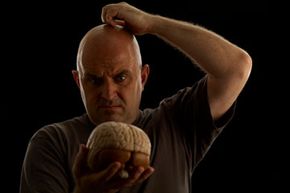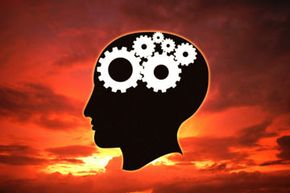Chances are, at one time or another, somebody -- your fourth-grade teacher, an uncle concerned about your future prospects or a $200-an-hour corporate career coach -- has explained to you that most people only use 10 percent of their brains. This tidbit, which has been circulating since at least the mid-1930s and is still repeated in contemporary self-help books, often seems to be shared for motivational purposes: If you'd only wake up, smell thecoffeeand put more of your precious gray matter to use, you'd surely leave behind those legions of ordinary neuron-squandering dolts and climb to success.
There's only one catch: However widely accepted it is, the idea that people manage to function normally while utilizing such a miniscule portion of their brains is total nonsense. For years,doctors, brain researchers and science journalists have been explaining patiently to anyone who would listen that there is no scientific basis for what they call the 10-percentbrain myth. Similarly, prestigious and credible publications like Scientific American and the New York Times have sought to dispel it as well, with little effect [sources: Beyerstein,Parker-Pope]. In a non-scientific Internet poll on the Web site Helium.com, for example, 52 percent of respondents believed incorrectly that humans use only 10 percent of their brains, while 48 percent correctly disagreed [source:Helium]. The mistaken notion is so pervasive, in fact, that in a study published in the Journal of Psychology in 1998, researchers found that college psychology majors, who presumably should know better, were as likely to believe it as other students [source:Higbee].
Advertisement
"Despite much contrary data and its affront to logic, this hoary myth refuses to die, no doubt because of (you guessed it) the considerable uplift and encouragement it affords, not to mention the profit it generates for those who hawk self-improvement products that exploit the myth," neuroscientists Sergio Della Sala and Barry L. Beyerstein once lamented in an essay. "If 90 percent of the brain were really a cerebral spare tire, as many of these hucksters claim, learning to tap its unused capacity would be the route to fabulous achievement, riches and fame -- even, according to many New Age entrepreneurs, the pathway to psychic powers and transcendent bliss" [source: Della Sala].
So what's the truth about how much of your brain you actually use? And how do scientists study how the brain functions? Find out on the next few pages.
Advertisement






